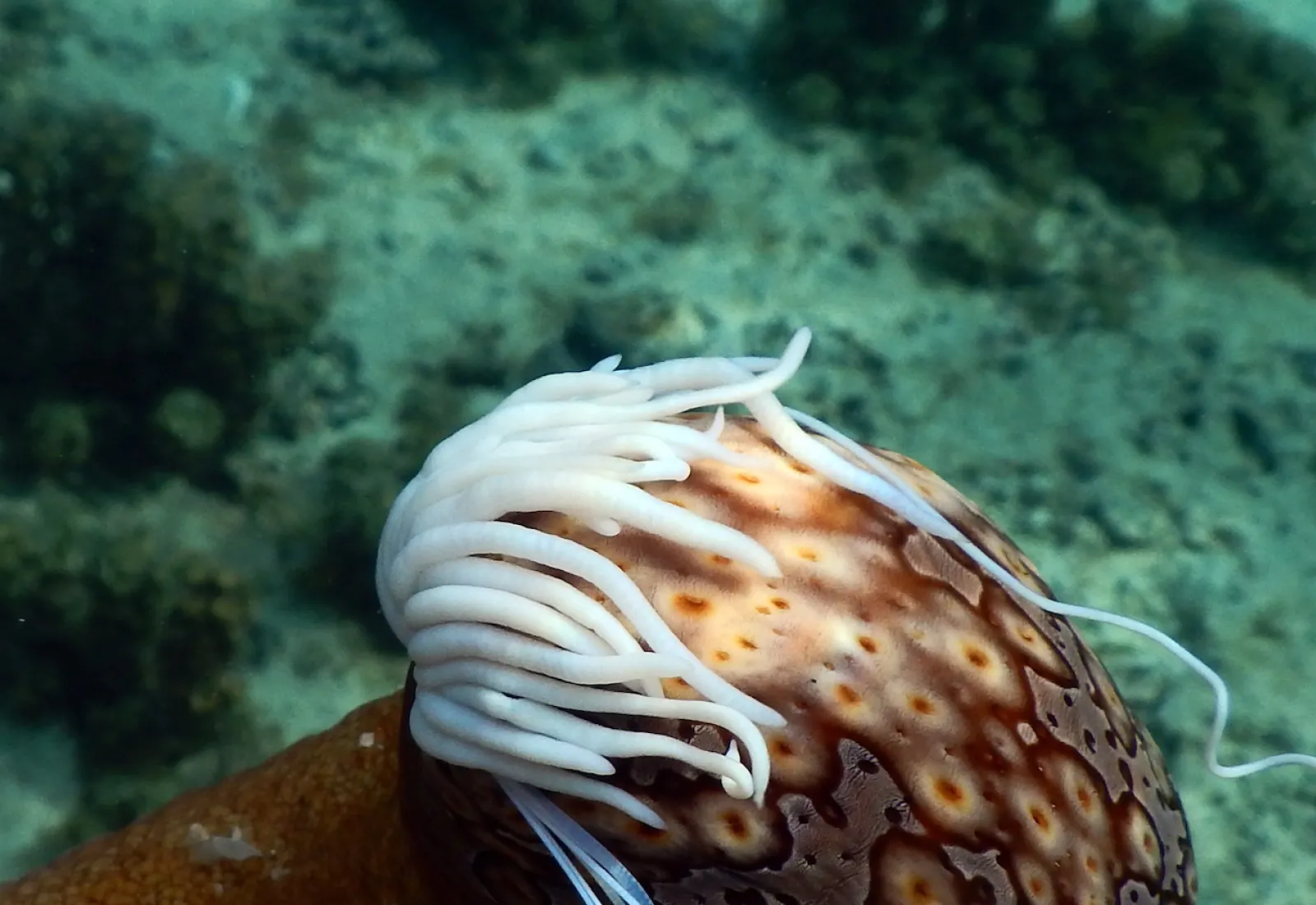The sea cucumber, or ‘rori’ as it’s known in Tahiti, is our organism of the month for May. Sea cucumbers have soft, long bodies without spines, which differentiates them from their echinoderm cousins (sea urchin, starfish, the crinoid and the brittle star).
Watch the Nat Geo WILD video to find out just how fascinating these creatures are.
Sea cucumbers are benthic animals, meaning they populate the seafloor (shallow and/or very deep). You can often see them burying themselves in the sand, but they are also visible on rocky bottom, crevices, and in the intertidal. They typically measure between 10-30 centimeters, but can be as small as 3 millimeters or as large as 3 meters.

Holothuria atra | rori

Synapta maculata

Bohadscia argus


Sea cucumbers come in a diverse range of shapes and colors, from globular to serpentine (snake-like), smooth or filled with spines, and colored or spotted in brown, yellow, red, black, etc.
On Tetiaroa there are three common species. Holothuria atra is seen all over shallow sand flats, They particularly like to gather in the ‘hoa’ passage of water in between two islets. Synapta maculata are often mistaken for a snake or eel since they can stretch out for over 2 meters. They live in shallow rocky environments where they can hide under and around rocks. Their feeding tentacles are often visible and active. Bohadscia argus is a large sea cucumber that can be mottled light or dark brown. It lives on open lagoon floor amongst coral heads and can be seen while snorkeling.
Around the mouth is a ring of tentacles of very different shapes and sizes depending on the species and their diet. Sea cucumbers use their tentacles to capture their food, whether it is capturing plankton or sifting through sand. They eat by bringing one tentacle at a time into the mouth opening.


Sea cucumbers breath through the anal orifice, or cloaca. The cloaca contracts to pump water into the "respiratory tree" and then back out again. The cloaca may be equipped with teeth to deter parasite visitors or to regulate internal hosts. Sea cucumbers often harbor and provide protection for a host in exchange for cleaning such as the imperial shrimp. Others may cling to sea cucumbers at their expense, or worse live inside and feed on their internal organs (Encheliophis "Silver Pearlfish").
Sea cucumbers don’t have many predators, though fish like triggerfish can feed on them.
Their defenses include a tough resistant skin that can sometimes be as hard as a rock, a toxin that can be deadly for fish, and they can release long and extremely sticky filaments from their cloaca called Cuvieran tubes. These long white filaments are extremely sticky and are familiar to anyone who has handled a sea cucmber. (The tubes can often be found in Polynesian kid’s hair after playing the 'rori' war. Yet, if we knew that the 'rori' take two to five weeks to regenerate their defensive tubes, we would avoid playing with them.)
Among sea cucumbers there is no sexual dimorphism, males and females are similar. Spawning occurs just after full and new moons when the tidal currents are stong and individuals stand upright to release their gametes. Fertilization then occurs in open water. Asexual reproduction exists in some species of sea cucumbers where one individual splits in two and each part becomes a complete individual.


Because sea cucumbers are slow and can’t really travel long distances, they are tied very closely to their environment. Studies demonstrate that they are reliable bio-indicator of the quality of their habitat. Analysis of a small piece of their feeding appendages (which quickly regenerates) can give a snapshot of the organic nutrients of a site. It is critical we continue to work together to protect the environment they depend on.


